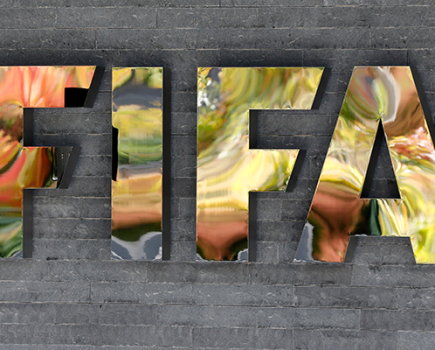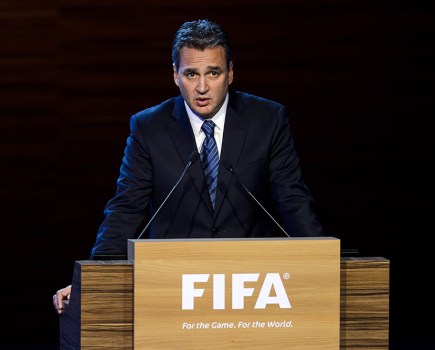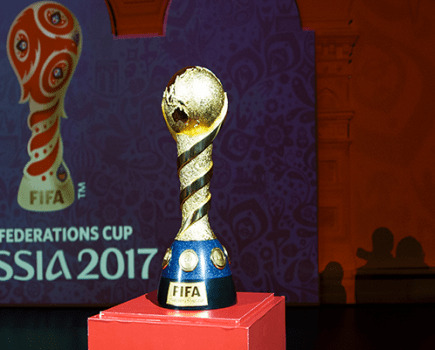 GoalControl, last in through the approval door, has claimed a significant advantage in the commercial race to capitalise on football’s approval of goal-line technology by securing FIFA’s vote for the Confederations Cup.
GoalControl, last in through the approval door, has claimed a significant advantage in the commercial race to capitalise on football’s approval of goal-line technology by securing FIFA’s vote for the Confederations Cup.
The German system saw off competition from similar camera-based Hawk-Eye as well as sensor-led GoalRef and Cairos.
A FIFA statement explained: “While all four companies had previously met the stringent technical requirements of the FIFA Quality Programme, the final decision was based on criteria relating more specifically to the tournaments in Brazil, including the company’s ability to adapt to local conditions and the compatibility of each GLT system in relation to FIFA match operations. The respective bids were also judged on cost and project management factors such as staffing and time schedules for installation.”
The value of the deal has yet to emerge by single-step installation costs for the various systems is understood to range between £100,000 and £250,000 – before ongoing technical and maintenance costs are considered.
This was the latest stage in the process kicked off when FIFA president Sepp Blatter felt the full weight of international ridicule after Frank Lampard’s phantom goal in England’s defeat by Germany in Bloemfontein in the 2010 World Cup finals.
The Chelsea man’s shot in England’s second round tie hit the underside of the bar, ricocheted down behind the line then bounced out. The Uruguayan referee waved play on and England lost 4-1.
Blatter, until then an opponent of technology on the grounds that it infringed the ‘universality’ of the game, flip-flopped overnight.
A year earlier GLT had been pushed off the International Board’s law-making agenda by the failure of various systems to match testing demands and a flawed trial at the 2007 World Youth Cup in Colombia. Also, FIFA vice-president Michel Platini had been successful in promoting his favoured goal-line assistants concept.
Then Batter went to Bloemfontein and underwent his own ‘Damascus conversion.’
Applicants were invited to test again and, on a historic July 5 last year, Hawkeye and GoalRef were approved for use by the International Board law-makers after stringent testing including the essential demand that the referee must receive a confirmatory signal within one second of the ball crossing the line.
Two weeks earlier Blatter’s desire to see GLT approved had been underlined by his insistence that it was a “necessity” after the Ukraine-England incident at Euro 2012. Marko Devic had been denied an equaliser after John Terry hooked the ball out from beyond the goal-line. Hungarian assistant Istvan Vad – employed as a goal-line assistant under the rival and experimental five-officials system – could not have been better placed.
No matter that Ukraine should have been pulled up for offside earlier in the move: Blatter had been handed the final bullet to shoot down any remaining opponents of GLT (including Platini).
Both Hawk-Eye and GoalRef were used during the Club World Cup in Japan last December. Neither was needed to resolve an ‘over-the-line’ issue.
Independent testers assured FIFA that both systems functioned as effectively as could be ascertained and a tender was opened to fulfil Blatter’s promise that GLT would be installed in Brazil for both this June’s Confederations Cup and next year’s World Cup.
FIFA will not use the goal-line assistants system pioneered in European international competition by UEFA and taken up in top-division competition in Italy and Brazil.
The simple reason is that the match officials in Brazil will be drawn from all around the world and very few of the non-Europeans have any experience of the six-man system.
The full FIFA statement:
FIFA appoints goal-line technology provider for Brazil 2013
The use of goal-line technology (GLT) at the FIFA Confederations Cup 2013 moved a step closer today, with FIFA confirming the appointment of GoalControl GmbH as the official GLT provider for the tournament.
The announcement follows a comprehensive tender process that began in February and involved bid presentations at the Home of FIFA in Zurich as well as site inspections in Brazil. As part of the tender, GoalControl GmbH is also set to be GLT provider for the 2014 FIFA World Cup Brazil™ provided that the performance of the system during this year’s Festival of Champions meets all necessary FIFA requirements.
The Germany-based company, which uses 14 high-speed cameras around the pitch as part of its GoalControl-4D system, was selected ahead of the three other FIFA-licensed GLT providers who participated in the tender.
While all four companies had previously met the stringent technical requirements of the FIFA Quality Programme, the final decision was based on criteria relating more specifically to the tournaments in Brazil, including the company’s ability to adapt to local conditions and the compatibility of each GLT system in relation to FIFA match operations. The respective bids were also judged on cost and project management factors such as staffing and time schedules for installation.
Following a thorough analysis of the final proposals, FIFA appointed GoalControl GmbH as GLT provider on Tuesday, 2 April, and notified all participating companies of the decision.
The use of GoalControl-4D in Brazil is subject to a final installation test at each stadium where the system will be installed, which is a standard procedure as part of the official certification process defined in the GLT Testing Manual.
These tests will be conducted by an independent test institute. Prior to the start of every match, the match officials will also carry out their own tests, in-line with the operational procedures first implemented at the FIFA Club World Cup 2012 in Japan.
FIFA will now liaise with GoalControl GmbH to define the timeline for installation leading up to the FIFA Confederations Cup.
The tournament will mark the second time GLT has been used at a FIFA competition, after the successful implementation of the technology at last December’s FIFA Club World Cup. This followed the historic decision by the International Football Association Board (IFAB) to approve the principle of using GLT during a special meeting on 5 July 2012.
A media event is scheduled to take place in Brazil prior to the event with a demonstration of the GoalControl-4D system. Further details will be communicated to journalists in due course.
All related news articles, videos and information on GLT can be found at www.fifa.com/quality






